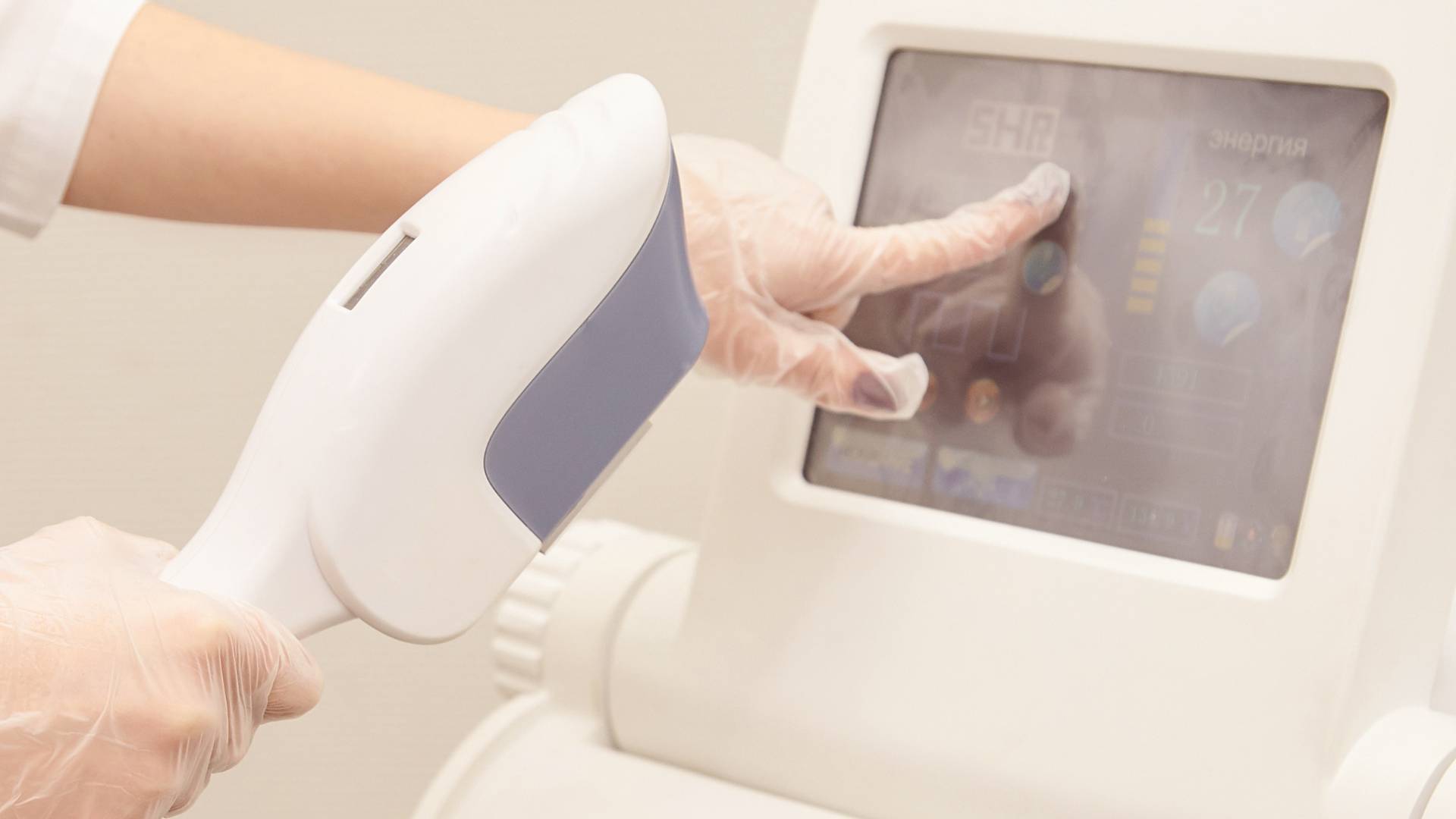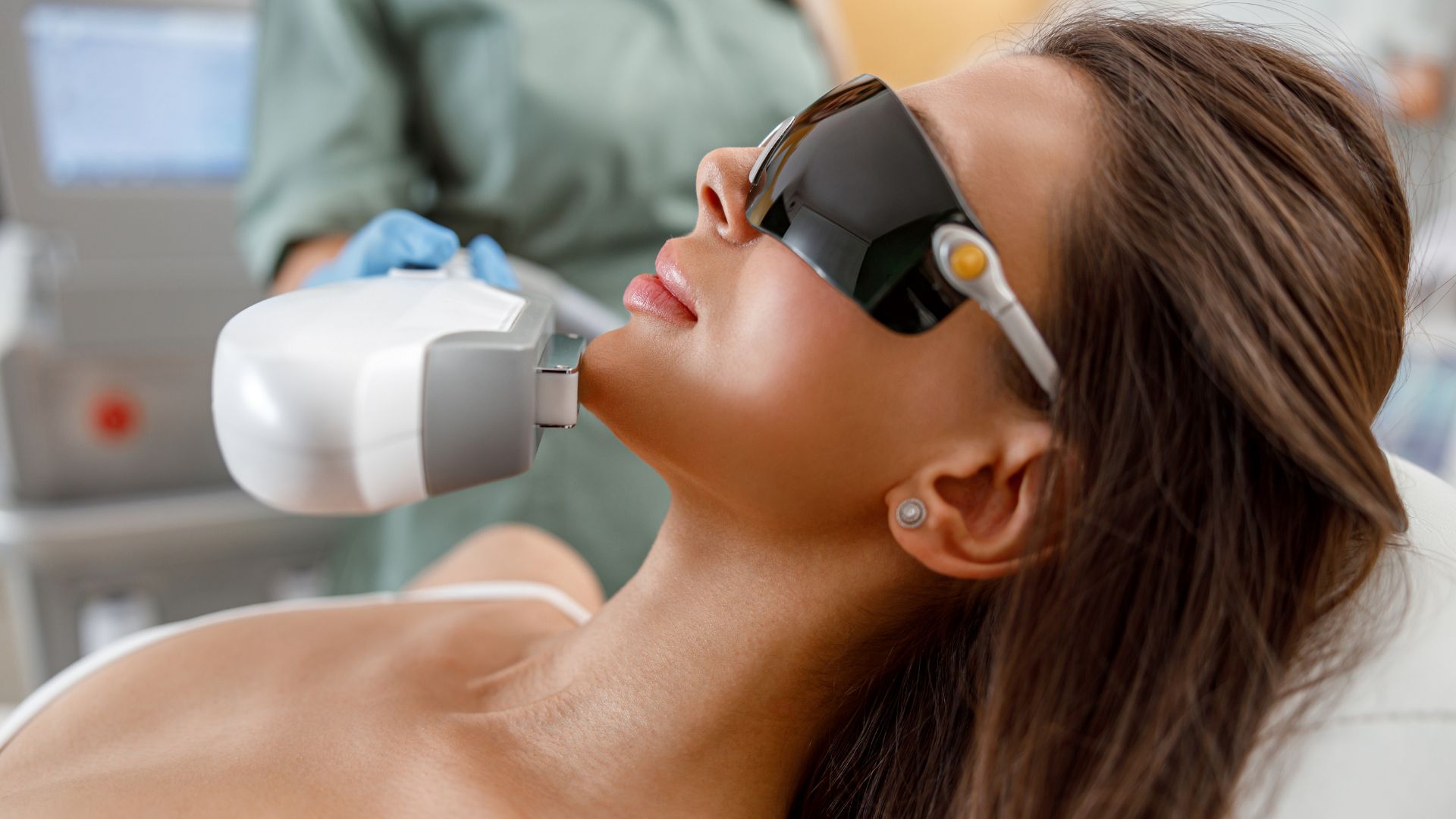
IPL vs Laser Hair Removal: Aesthetic Insights for Medical Professionals
At Aesthetics Medical Training (AMT), we’re dedicated to providing licensed healthcare professionals with the tools and knowledge needed to offer cutting-edge treatments, including IPL and laser hair removal. Understanding the differences between these two technologies is crucial for delivering safe and effective treatments.
Laser hair removal uses a single wavelength of light that targets the melanin in the hair follicle, resulting in longer-lasting results. In contrast, IPL (Intense Pulsed Light) uses a broad spectrum of light, making it more versatile but often requiring more sessions for comparable results.
According to recent data, the global laser hair removal market is expected to grow by 18.1% annually, reaching $4.61 billion by 2032, highlighting the rising demand for these procedures in aesthetics.
This article will cover:




- What IPL and laser hair removal are
- Key differences in technology, effectiveness, and patient suitability
- How to integrate these treatments into your aesthetic practice
What Is IPL (Intense Pulsed Light)?
IPL (Intense Pulsed Light) is a versatile cosmetic treatment that utilizes a broad spectrum of light to target pigmentation and hair follicles beneath the skin. Unlike laser hair removal, which uses a single wavelength of light, IPL hair removal employs multiple wavelengths, allowing it to treat a wider range of skin and hair types. The light energy is absorbed by the pigment in the hair, turning into heat and damaging the follicle to reduce hair growth.Key Features of IPL:
- Broad Spectrum: IPL emits pulses of light across a range of wavelengths, making it effective for not only hair removal but also treating skin concerns like sun damage, age spots, and pigmentation issues.
- Versatility: IPL treatments can be customized based on the patient’s skin tone, hair color, and treatment area. This makes it a go-to solution for healthcare professionals looking to offer multiple cosmetic services with one device.
- Minimal Downtime: Patients typically experience little discomfort and can return to normal activities immediately after treatment, which is often referred to as a “lunchtime procedure”.
Benefits for Medical Professionals:
- Customizable Settings: IPL devices allow practitioners to adjust energy levels and pulse durations based on the treatment area and patient skin type, offering greater flexibility.
- Wide Application: In addition to hair removal, IPL can also address skin rejuvenation and treat vascular lesions, making it a valuable asset for aesthetic clinics.

What Is Laser Hair Removal?
Laser hair removal works by directing a concentrated beam of light at the hair follicle, specifically targeting the melanin in the hair. This light energy is converted into heat, which damages the hair follicle and inhibits future hair growth. Unlike IPL, which uses a broad spectrum of wavelengths of light, laser hair removal utilizes a single wavelength of light, allowing for more precise targeting of unwanted hair.Key Features of Laser Hair Removal:
- Precision: Laser hair removal is highly effective at targeting individual hair follicles, making it ideal for treating coarse, dark hair on a variety of skin types.
- Fewer Sessions: Due to its focused light energy, laser treatments generally require fewer sessions than IPL to achieve long-term hair reduction.
- Long-Term Results: Laser hair removal can lead to significant, permanent hair reduction of up to 90%, particularly for those with darker hair and lighter skin tones.
Benefits for Medical Professionals:
- Greater Precision: Medical-grade lasers allow practitioners to tailor treatments based on hair type, color, and skin tone, offering more effective solutions for darker skin tones.
- Fewer Treatments: Patients typically require fewer sessions compared to IPL, which translates to less time and discomfort.
- Diverse Applications: Laser hair removal devices can treat a wide range of body areas, from the face to larger areas like the back and legs, making it a versatile option for aesthetic practices.

IPL vs Laser Hair Removal
When comparing IPL and laser hair removal, there are key differences in how each technology works and the type of results patients can expect.Effectiveness
- Laser hair removal uses a single wavelength of light that precisely targets the melanin in individual hair follicles. This method offers greater effectiveness for patients with dark hair and lighter skin tones, achieving long-term hair reduction in fewer sessions.
- IPL treatments, using a broad spectrum of light, are generally less powerful and require more sessions to achieve comparable results. However, IPL can be effective on a wider range of skin conditions, such as pigmentation and vascular issues.
Treatment Areas
- Laser hair removal is more suited for smaller, targeted areas like the face and underarms due to its precision.
- IPL can cover larger body areas, such as the legs and back, more quickly but may not be as effective on finer or lighter hair.
Patient Comfort
- Patients often report more discomfort during laser treatments due to the higher energy levels used. However, newer devices have integrated cooling systems to reduce pain.
- IPL treatments tend to cause less discomfort but may lead to skin irritation and require more sessions, increasing the overall time commitment.
Side Effects and Risks
- Both treatments carry the risk of skin redness, pigmentation changes, and temporary sensitivity. Patients with darker skin tones may experience a higher risk of side effects with IPL.
Costs and Time Commitment
- Laser treatments generally require fewer sessions (3-6) but are more expensive per session, a complete treatment averaging around $697 in the U.S.
- IPL is typically more affordable but requires a greater number of treatments (up to 10 sessions) to achieve permanent hair reduction.

Patient Suitability for IPL vs. Laser Hair Removal
Assessing patient suitability for IPL and laser hair removal requires consideration of several factors, including skin tone, hair type, and medical history. These elements influence the effectiveness and safety of the chosen treatment.Ideal Candidates for IPL:
- Best for lighter skin tones with dark hair: IPL’s broad-spectrum light targets pigment but is less precise, making it less effective on darker skin types.
- Suitable for a range of skin concerns: IPL is also used to treat pigmentation issues, sun damage, and vascular lesions in addition to hair removal.
- Lower energy levels: This treatment can be safer for patients with sensitive skin, though it may require more sessions to achieve desired results.
Ideal Candidates for Laser Hair Removal:
- More effective for darker hair and lighter skin: The focused laser light is ideal for dark hair as it targets melanin within the follicle.
- Works well on larger areas: Laser devices are more efficient for long-term hair reduction across larger body areas like the legs or back, and fewer treatments are typically needed.
- Safer for darker skin tones: With the right laser technology, such as the Nd laser, darker skin tones can be treated safely.
Tips for Patient Consultations:
- Set realistic expectations: Discuss with patients how many treatment sessions they may need, depending on their hair color and skin tone.
- Medical history considerations: Always consider any prior skin conditions or pigmentation issues to prevent adverse effects.
Incorporating IPL and Laser Hair Removal into Your Practice
Integrating IPL and laser hair removal into your aesthetic practice can enhance your service offerings and attract a diverse range of clients seeking long-term solutions to unwanted hair.Training and Certification Requirements:
- Training and certification are essential for offering these treatments safely and effectively. Medical professionals need to understand the wavelength and energy levels used in these procedures to avoid complications, such as skin damage. Most countries and states require practitioners to complete specific training and certification programs before they can legally operate laser hair removal devices.

Importance of Proper Education:
- Proper education and hands-on training are crucial to ensure patient safety. According to industry studies, poorly trained operators increase the risk of adverse effects such as burns, pigmentation issues, and discomfort for patients.
Expanding Service Offerings:
- Offering both IPL and laser treatments allows your practice to cater to a wider range of skin tones and hair types.
- Incorporating both methods can help attract more clients, including those seeking cosmetic treatments for body hair and those looking for solutions to pigmentation and skin rejuvenation issues.
Aesthetics Medical Training: Enhance Your Practice with Laser and IPL Hair Removal Expertise
At Aesthetics Medical Training (AMT), we are dedicated to equipping healthcare professionals with the skills needed to provide cutting-edge cosmetic treatments like IPL and laser hair removal. Our comprehensive training programs offer hands-on experience with the latest medical-grade lasers and IPL machines, preparing professionals to tailor treatments to individual needs. With IPL, you’ll learn to handle a wider range of skin conditions, while our laser training ensures you can offer solutions for darker skin types and thicker hairs.Mastering These Technologies to Grow Your Practice
By offering both IPL and laser treatments, you can cater to a broader clientele and enhance patient satisfaction. Studies show that combining these services increases patient retention and opens the door to more advanced cosmetic treatments. Enroll today to provide the safest, most effective options in hair removal and skin care.
Thinking About Advancing Your Aesthetics Skills?
Contact our team today to learn how our training programs and cutting-edge technology can support your journey. Fill out the form or give us a call to get started.



